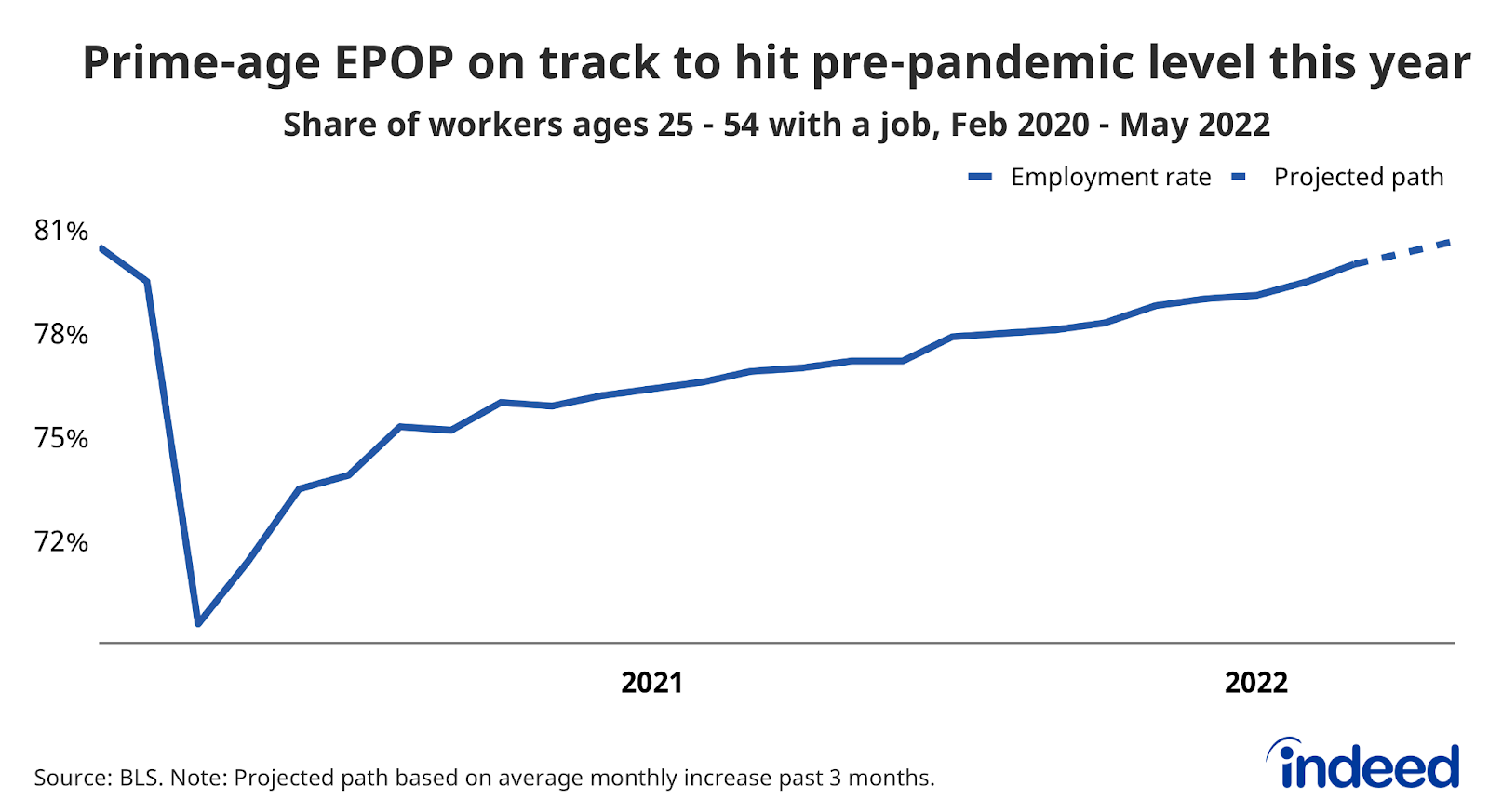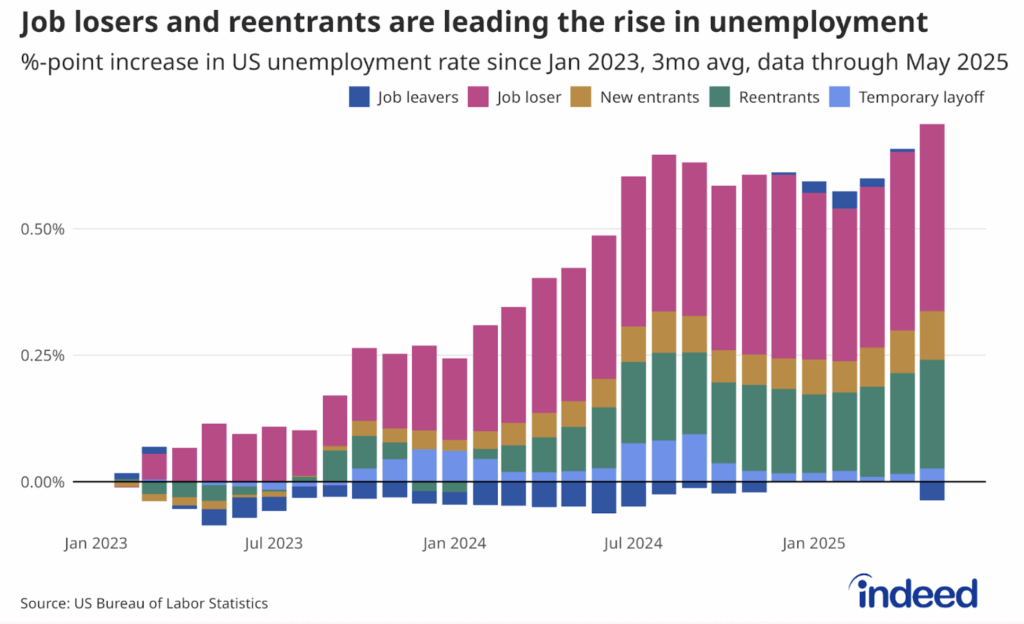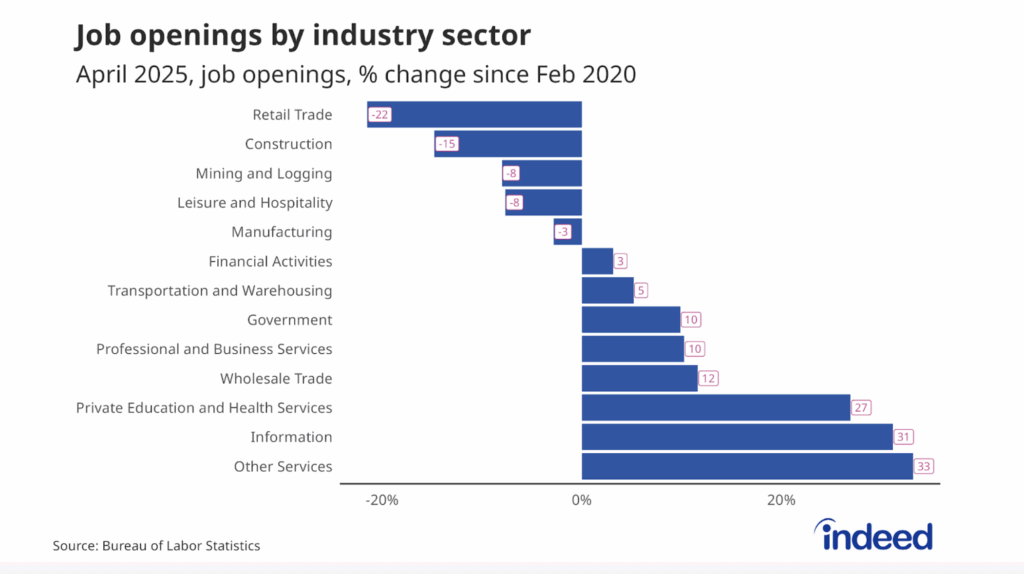The US labor market keeps humming along. Employment growth remains robust as monthly job growth has averaged 562,000 jobs over the past three months. Joblessness continues to decline as the employment-to-population (EPOP) ratio spiked among people in their prime working years. Wages grew more quickly in March than in February, but recent trends suggest that wage growth has leveled off. The job market is on a solid trajectory as robust demand pulls more workers into employment with strong and increasingly stable wage growth.
The labor supply concerns of last year continue to fade. The share of the population with a job increased again in March, with a noticeable uptick for workers ages 25 to 54 years old. This key statistic is growing rapidly and is on track to hit its pre-pandemic level in May. The overall labor force participation rate didn’t move much last month, but the rate for prime-age workers increased. While some workers, noticeably those 55 years and older, aren’t returning at a rapid pace, the prospects for labor supply are very bright.
Wage growth also continues to hold steady, as year-over-year growth was 6.7% for production and nonsupervisory workers. However, this is the same rate these workers saw in both February and January. At least among this group of workers, wages are no longer accelerating. Wage growth continues to be strongest for production workers in leisure and hospitality with year-over-year gains of almost 15%. Strong and stable wage growth is a positive indicator for a more sustainable labor market recovery.
The labor market continues to power ahead, despite significant headwinds looming. Demand for workers continues to be strong, but the potential easing suggests that the current temperature of the labor market might not last forever. A slightly cooler labor market would be a more sustainable one, but hopefully the temperature doesn’t drop too much.






